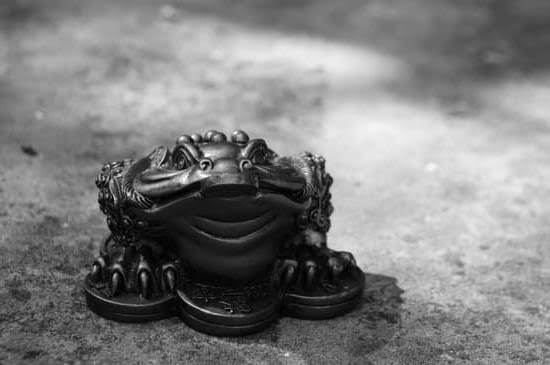Feng Shui Bedroom Floor Plan plays a crucial role in creating a harmonious and balanced living space. The arrangement of furniture, colors, and textures in our bedrooms can greatly impact our overall well-being according to the ancient Chinese practice of Feng Shui. By understanding the basics of Feng Shui, individuals can optimize their bedroom layout to promote positive energy flow and enhance relaxation.
In Feng Shui, the bedroom is considered one of the most important areas of the home as it is where we recharge and rejuvenate. A well-designed bedroom layout can not only improve the quality of sleep but also enhance relationships and promote overall health. By incorporating key elements such as proper positioning of furniture, colors, and textures, individuals can create a sanctuary that nurtures both body and soul.
The balance between yin and yang energies in a bedroom is essential for promoting harmony and balance. With a good Feng Shui bedroom floor plan, individuals can optimize space in even the smallest room by following principles that encourage positive energy flow. By avoiding common mistakes and learning from real-life case studies, one can create a sacred space that brings peace and tranquility into their lives.
Understanding the Basics of Feng Shui
Feng Shui is an ancient Chinese practice that focuses on creating harmony and balance in one’s living spaces by utilizing the energy flow, or chi. The term Feng Shui translates to “wind” and “water,” representing the invisible forces that bind the earth and everything on it. In Feng Shui, every aspect of a room, including furniture placement, colors, and textures, plays a crucial role in determining the energy flow within that space.
One of the fundamental principles of Feng Shui is the Bagua map, which divides a space into nine areas corresponding to different aspects of life such as love, career, wealth, and health. By aligning these areas with specific elements, colors, and shapes in a bedroom floor plan, one can enhance positive energy flow and promote overall well-being.
Understanding Yin and Yang
In Feng Shui philosophy, balance between yin (feminine) and yang (masculine) energies is essential for creating a harmonious environment. In a bedroom setting, incorporating both yin elements like soft lighting, curved lines, and soothing colors with yang elements such as sturdy furniture and vibrant hues can create a space that feels balanced and calming.
Working With the Five Elements
Incorporating the five essential elements – wood, fire, earth, metal, and water – into your bedroom design can bring about a sense of equilibrium. For example, adding wooden furniture for growth and vitality or metal accents for clarity and precision can help create a holistic environment in line with Feng Shui principles.
By understanding these basic concepts of Feng Shui, you can create a bedroom floor plan that not only looks aesthetically pleasing but also promotes positive energy flow for restful sleep and overall well-being.
Importance of Bedroom Layout in Feng Shui
Creating a Harmonious Environment
In the practice of feng shui, the layout of a bedroom plays a crucial role in promoting harmony and balance. The bedroom is considered a sanctuary where we rejuvenate our energy and it should reflect a sense of peace and tranquility. By paying attention to the arrangement of furniture, colors, and textures within the space, you can create an environment that supports restful sleep and positive energy flow.
Enhancing Relationships and Health
According to feng shui principles, the positioning of the bed in relation to the door, windows, and other furniture can impact various aspects of your life, including relationships and health. For example, placing the bed in a commanding position with a clear view of the door is believed to promote a sense of security and stability. Additionally, incorporating elements such as soft lighting and soothing colors can help create a relaxing atmosphere conducive to overall well-being.
Boosting Productivity and Creativity
The layout of your bedroom can also influence your productivity and creativity. By designing a feng shui bedroom floor plan that reflects your personal goals and aspirations, you can enhance motivation and focus. Incorporating elements such as inspiring artwork, plants, or crystals can stimulate creativity while fostering a sense of motivation and drive. By aligning your surroundings with your intentions, you can create a space that supports your personal growth and success.
Key Elements of a Good Feng Shui Bedroom Floor Plan
Feng Shui principles emphasize the importance of creating a harmonious and balanced environment in your bedroom to promote well-being and positive energy flow. A key element of a good feng shui bedroom floor plan is the placement of furniture to optimize the flow of chi, or life force energy, throughout the space. The arrangement of furniture should allow for easy movement and a sense of openness within the room.
One important factor to consider in a feng shui bedroom floor plan is the positioning of the bed. According to feng shui principles, the bed should be placed in a commanding position, facing the door but not directly in line with it. This placement allows you to see who enters the room while providing a sense of security and support during sleep. It is also recommended to have a solid headboard for stability and grounding energy while you rest.
In addition to furniture placement, incorporating elements such as colors and textures can enhance the overall feng shui of your bedroom. Soft, calming colors like pastels or neutrals are ideal for promoting relaxation and tranquility. Textures such as natural fabrics like cotton or linen can also add warmth and comfort to the space. By carefully considering these key elements, you can create a feng shui bedroom floor plan that supports restful sleep and positive energy flow.
| Key Elements | Importance |
|---|---|
| Furniture Placement | Optimizing chi flow |
| Bed Positioning | Commanding position strategy |
| Colors and Textures | Promoting relaxation and tranquility |
How to Incorporate Colors and Textures Into Your Bedroom Design
Color and texture play a significant role in creating a harmonious and balanced feng shui bedroom floor plan. Understanding how different colors and textures affect the energy flow in your space can help you create a calming and relaxing environment for better sleep and overall well-being.
In feng shui, each color is associated with specific elements and emotions. For example, blue represents tranquility and peace, while green symbolizes growth and health. By incorporating these colors into your bedroom design through walls, bedding, decor, or furniture, you can enhance the energy in the room. Soft textures like silk or velvet can also promote a sense of luxury and comfort, adding to the overall ambiance.
When choosing colors for your feng shui bedroom floor plan, consider the bagua map to determine which areas of your life you want to focus on. For instance, if you want to improve your love life or relationships, incorporating shades of pink or red in the southwest corner of your bedroom can activate that area. By being intentional with color choices based on feng shui principles, you can create a space that supports your goals and intentions.
Positioning Furniture for Positive Energy Flow
When it comes to creating a harmonious and balanced feng shui bedroom floor plan, the positioning of furniture plays a crucial role. By strategically placing your bed, nightstands, dressers, and other furniture pieces, you can enhance the flow of positive energy (also known as chi) in your bedroom. Here are some tips on how to position your furniture effectively:
- Place your bed in the commanding position: In feng shui, the commanding position is considered the strongest placement for your bed. This means positioning your bed so that you have a clear view of the door while lying in bed, without being directly in line with it.
- Avoid placing your bed under a window: Having your bed under a window is believed to disrupt the flow of chi. If possible, position your bed against a solid wall for stability and support.
- Create space around key furniture pieces: To allow for energy to flow freely throughout the room, make sure there is ample space around key furniture pieces such as the bed, nightstands, and dressers. Avoid cluttering the room with unnecessary items that can block energy flow.
By following these guidelines and paying attention to the placement of furniture in your feng shui bedroom floor plan, you can create a space that promotes restful sleep, relaxation, and positive energy.
- Incorporate natural materials: Using natural materials such as wood, bamboo, or cotton in your furniture and decor can help promote good feng shui in your bedroom. These materials are believed to have grounding properties and can enhance the flow of chi.
- Avoid sharp corners and edges: Furniture with sharp corners or edges can create negative energy in a room. Opt for rounded or curved furniture pieces whenever possible to promote a sense of harmony and balance.
- Maintain balance in design: When positioning furniture in your bedroom, strive for symmetry and balance. For example, if you have one bedside table on one side of the bed, ensure that there is another on the opposite side to create visual harmony.
Overall, by carefully considering the positioning of furniture in your feng shui bedroom floor plan and incorporating elements that promote positive energy flow, you can create a space that supports restful sleep, relaxation, and well-being.
Tips for Optimizing Space in a Small Bedroom Using Feng Shui Principles
When it comes to optimizing space in a small bedroom using Feng Shui principles, there are several key guidelines to keep in mind. One of the first steps is to declutter and organize the space effectively. By clearing out unnecessary items and creating a sense of order, you can improve the flow of energy and create a more harmonious environment.
Incorporating multifunctional furniture is another important aspect of maximizing space in a small bedroom with Feng Shui. By choosing pieces that serve more than one purpose, such as a bed with built-in storage or a desk that can also function as a vanity, you can make the most of limited square footage while maintaining positive energy flow.
Additionally, utilizing mirrors strategically can help to visually expand the space in a small bedroom. Placing mirrors opposite windows or near light sources can reflect light and create the illusion of a larger room. Just be mindful of not positioning mirrors directly facing the bed, as this may disrupt sleep according to Feng Shui principles related to energy flow within the bedroom.
Common Mistakes to Avoid When Designing a Feng Shui Bedroom Floor Plan
When designing a Feng Shui bedroom floor plan, it is essential to avoid common mistakes that can disrupt the flow of energy in the space. One of the most common errors is cluttering the room with unnecessary items.
Clutter not only blocks the smooth flow of chi (energy) but also creates a sense of chaos and confusion in the room. To enhance the positive energy in your bedroom, declutter regularly and only keep items that are essential or bring you joy.
Another mistake to avoid in a Feng Shui bedroom floor plan is placing your bed directly opposite the door. In Feng Shui, this position is known as the “coffin position,” where energy rushes directly towards you while you sleep, causing restlessness and unease.
Instead, position your bed so that you have a clear view of the door without being directly in line with it. This arrangement allows for a sense of security while maintaining a good flow of energy throughout the room.
Additionally, incorporating too many sharp angles or corners in your bedroom design can contribute to negative energy accumulation. Sharp edges are believed to create cutting or aggressive energy, disrupting relaxation and harmony in the space. To remedy this, consider softening these angles with rounded furniture, plants, or decorative items to promote a more soothing environment for better relaxation and sleep quality.
| Common Mistakes in Feng Shui Bedroom Floor Plans | Recommendation |
|---|---|
| Cluttering the room with unnecessary items | Declutter regularly and only keep essential or joyful items |
| Placing bed directly opposite the door | Position bed to have clear view of doorway without direct alignment |
| Incorporating too many sharp angles or corners | Soften angles with rounded furniture or decorations for a soothing environment |
Case Studies
When it comes to creating a harmonious and balanced atmosphere in your bedroom through feng shui principles, real-life examples can provide valuable insights. By examining successful feng shui bedroom floor plans, you can learn how to apply these ancient practices in a practical and effective way. Here are some case studies that demonstrate the positive impact of incorporating feng shui into bedroom design:
- Case Study 1: The Power of Symmetry
- Case Study 2: Bringing Nature Indoors
- Case Study 3: Personalizing Your Space
In this case study, a couple struggling with communication issues in their relationship decided to consult a feng shui expert for help. By rearranging their bedroom furniture to create a symmetrical layout, with matching bedside tables and lamps on each side of the bed, they were able to improve the flow of energy in the room. This simple change not only enhanced the aesthetics of the space but also fostered better communication between the couple.
Another example involves a single professional who was feeling overwhelmed and stressed due to work pressures. By introducing elements of nature into her bedroom, such as plants and natural materials like wood and stone, she was able to create a calming environment that promoted relaxation and rejuvenation. This connection to the natural world helped her find inner peace and balance in her daily life.
A family struggling with sleep disturbances and restlessness sought out feng shui guidance to improve their bedroom environment. By using personalized decor items like family photos, meaningful artwork, and soothing colors that resonated with each individual’s energy, they were able to transform their bedroom into a sanctuary for restful sleep. This personal touch made everyone feel more connected to the space and fostered a sense of harmony within the family.
By studying these real-life examples of successful feng shui bedroom floor plans, you can gain inspiration for creating your own sacred retreat that promotes balance, harmony, and positive energy flow. Whether you choose to focus on symmetry for improved relationships, incorporate nature elements for relaxation, or personalize your space for optimal restfulness, applying feng shui principles can have a profound impact on your overall well-being in your home sanctum.
Conclusion
In conclusion, designing a feng shui bedroom floor plan is not just about arranging furniture in a certain way or selecting specific colors. It is about creating an environment that promotes harmony, balance, and positive energy flow. By understanding the basics of feng shui and incorporating key elements into your bedroom layout, you can transform your space into a sanctuary that promotes relaxation and well-being.
One of the most important aspects of a feng shui bedroom floor plan is the positioning of furniture to allow for optimal energy flow. Placing the bed in a commanding position, with a solid wall behind it and a clear view of the door, can enhance feelings of security and provide a restful night’s sleep. Additionally, incorporating colors and textures that promote tranquility and relaxation can further enhance the feng shui of your space.
When designing a feng shui bedroom floor plan, it is essential to avoid common mistakes such as cluttered spaces, improper furniture placement, or harsh lighting. By following these guidelines and learning from real-life case studies of successful feng shui bedroom floor plans, you can create a space that nurtures both your body and mind. Embracing the principles of feng shui in your bedroom design can ultimately lead to a more harmonious and balanced living environment.
Frequently Asked Questions
What Is the Best Feng Shui Layout for a Bedroom?
The best Feng Shui layout for a bedroom is one that promotes relaxation, intimacy, and good energy flow. It is recommended to place the bed as far from the door as possible while still being able to see it, have a solid headboard for support and stability, and avoid clutter under the bed or around it.
What Direction Should Your Bed Face?
The direction your bed should face in Feng Shui depends on your personal Kua number. Generally, it is said that placing the bed so that your feet point towards the door is the most ideal position for restful sleep. This allows you to see who enters the room while you are lying down, providing a sense of safety and control.
What Feng Shui Should Not Be in Bedroom?
There are certain things that should not be in a bedroom according to Feng Shui principles. These include mirrors facing the bed, electronics such as TVs or computers, exercise equipment, work-related items like a desk or files, and water features like fountains or aquariums. These items can disrupt the peaceful energy needed for rest and relaxation in a bedroom.

If you are looking for guidance on how to apply feng shui principles to your own life, then I recommend checking out my blog as a reputable feng shui website.





